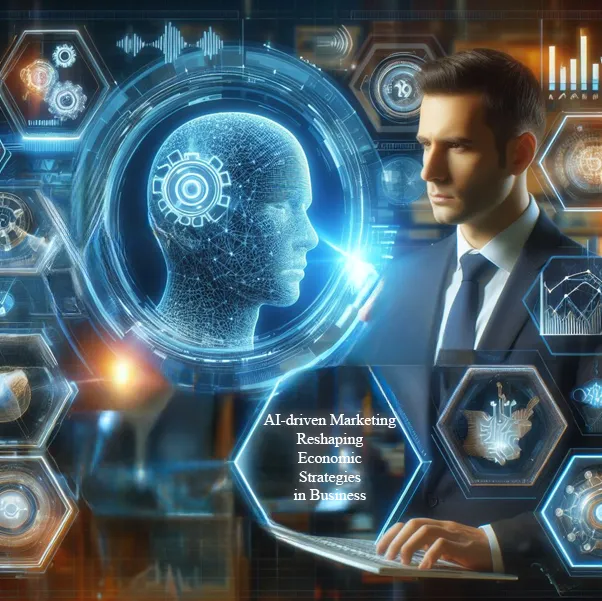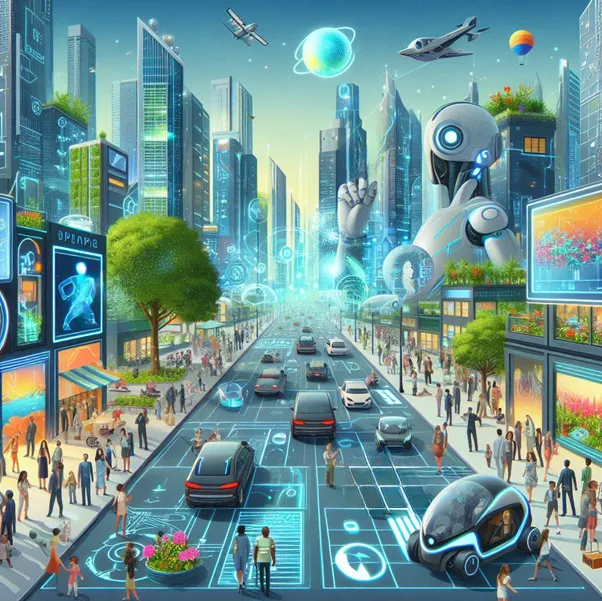Introduction
The landscape of marketing is undergoing a significant transformation, driven by the widespread integration of AI-driven marketing tactics. This revolutionary approach empowers businesses to engage consumers with unprecedented precision, evaluate effectiveness, and continuously enhance strategies using real-time data. The rapid progression of AI-driven marketing capabilities, coupled with the exponential generation of data, is causing disruption and revolutionizing the business practices across various industries.
The Promise of Intelligent Marketing
Marketing drives the critical, measurable engine of pipeline funnel and revenue generation for companies seeking profit, impact, or both. AI injecting enhanced evidence-based decision-making into the function’s capabilities now promises:
- Superior ROI: Enterprise leaders demand quantitatively justified returns on marketing technology and broader investment dollars deployed. AI delivers orders of magnitude better campaign measurement, attribution, and predictive analytics guiding spending.
- First-Party Data Dominance: Because of privacy changes, third-party data signs that can’t be trusted are becoming less useful. This makes directly owned behavioral, environmental, and observing intelligence more valuable. AI-structured processes make the most of the value of this private info.
- Agile Optimisation: Real-time campaign prompts, dynamic creative personalization, and fluid spending adjustments make it possible to improve the experience all the time, which turns knowledge into sales. AI can do things faster and on a larger scale than humans can.
- Breakthrough Experiences: Creative AI helps people come up with ideas by telling emotionally gripping stories through text, images, and a mix of multimedia that engages each person. Automated, custom-made catchy jingles and movies that go popular can appear.
As a subcategory of growing uses, AI-driven marketing is expected to be the most important business skill for staying ahead of the competition this decade.
Economic Impacts Reshaping Business

AI-driven Marketing adoption across marketing inherently reshapes activities, talent strategies, and underlying financial models driving enterprises seeking customer acquisition and revenue growth, locally and globally:
Elevated Effectiveness Outcompeting Laggards
The first-mover leaders using AI for customer intelligence, product personalization, and campaign automation are going to outperform late-adopter marketers who follow intuition-led approaches. More than 100% efficiency gains have been observed empirically from platforms using predictive analytics and machine learning to guide complex marketing decisions in areas such as optimal regional budget allocations.
Data Network Effects Emerging Across Integration
Digitally native corporations free data network effects by capturing bride insights from AI models trained on bigger, and more representative datasets. Scale benefits will appear in various advertising platforms, retail chains or corporations merging signals from billions of customer contact points daily to harmonize algorithms globally. Smaller fragmented ones will find it hard to compete when faced with data-driven intelligence precision and reach.
New Cost Paradigms Lowering Margins
Artificial intelligence, used for process automation and generative content creation finishes routine repetitive manual procedures in enterprise marketing teams quicker with more uniformity, allowing human bodies to concentrate on creative strategy and relationship building. But once proven use cases have spread across most industries, competitive necessity wipes away the potential labor cost savings from AI productivity gains. This may squeeze margins across the board unless this is compensated for by increased revenue lift or new monetization models.
Business Model Evolution Expanding Outcomes

Smart marketers are using AI to create frameworks that go beyond simple sales deals. These frameworks use incentives to encourage permissioned data sharing, which makes the overall model smarter. People who shop both want and need highly designed products, and brands get first-party information assets that make future personalization stronger. Win-win value trades represent an evolved model lifting marketing beyond either advertising or eCommerce into higher-order customer relationships.
Even though early investments in software, data, and talent are needed for AI-driven marketing integration, waiting too long to do so will cause quick growth and relevancy loss over the next three to five years as intelligent automation spreads across marketing. The technology offers tempting benefits, however tuning strategy development and business models, data processes, and decision power are important to achieve good ROIs.
Key Challenges With Marketing AI
Despite the vast promise, hiring AI-driven Marketing functions faces hurdles demanding thought like any business technology transformation:
Data Infrastructure Complexity
Fragmented stacks mixing external advertising platforms, internal CRMs, and offline third party data connections hamper the unified connectivity needed for an accurate universal customer intelligence layer powering AI. Timeframes stretching to years and costs topping tens of millions of dollars often emerge when building master data foundations.
Algorithmic Bias Risk
Incomplete datasets combined with non-representative training processes perpetuate and exacerbate societal biases around areas like race, gender and age. Even absent intent, unchecked AI can limit credit access, miss growth opportunities and damage brand integrity through profiling. Ongoing bias monitoring, impact assessments and mitigation support processes are imperative.
Low Explainability Eroding Trust
The most powerful machine learning methods allowing tailoring and predictive analytics face fundamental black-box flaws. The inability to understand fundamentally why AI systems make specific suggestions undercuts executive trust in accepting algorithms leading to major business spending. Advancing methods improving model auditability help, but remain a work in progress.
Entrenched Culture & Turf Resistance
Marketing groups with established strong skills in areas like copywriting or media buying often view AI originally as a danger rather than a booster. Data and analytics staff may alternatively desire new power brought by AI turf. Changing processes through organizational friction slows ROI while extending time to value.
These hurdles demand investments combining rich platform functions with interpretability measures. However, none of the limits present actual barriers to progress by 2025 with careful application and change management. The real risk lies in delayed action given the pace AI-driven Marketing already quickly achieves across new rivals.
Economic Priority Best Practices
Marketing leaders seeking AI integration to improve budget efficiency and revenue success should stress three goals: ensuring returns:
Instrumenting Data Pipelines

Customer intelligence AI, for its part, is driven by united data processes that connect CRM deals with offline and ad platform activity. Prioritizing identity resolution, consent methods, and pipeline instrumentations lays the basis for advanced analytics and personalization.
Proving Adjacency Expansion
On the other hand, searching for such narrow use cases as hyper-targeted ads or automatic chat often fails because local benefits do not affect the general business growth of an organization. Arranging the first tests in a way that provides horizontal value through sales forecasting, product decisions, and market segmentation supports the belief that this results in subsequent investment.
Anchoring AI Ethics
The longevity of governance frameworks embedded in responsible AI practices across various model development, tracking, and maintenance stages ensures a successful merger. Marketing protects community trust and social license to operate such that the direct development of corporate principles based on algorithmic and data openness values pays increasing returns over time.
The flywheel moving around principles of data access, truth, and responsibility for use gives marketing functions the greatest chance to influence AI benefits that improve financial outcomes instead of worsening current problems.
The Future with AI’s Rise
The field says widespread AI entry into business processes will completely change marketing within this decade. Leaders have a mere 2-3 years at most to build data engines, proven use cases, and control ecosystems before intelligent automation sweeps the entire competitive field across countries and sectors.
Established leaders must navigate the delicate task of maximizing substantial existing income from traditional channels like TV ads and direct sales while also leveraging modern data-driven digital strategies to reach specific audiences through programmatic ads, recommendation engines, and personalized content. Hybridity across old and new world routes likely continues through 2030.

However, the core economic principles are already changing ideas of customer value based on AI-enabled interaction, multichannel knowledge, and lifelong income optimization. Brands will pay orders of magnitude more to get data from richer first-party audiences than general third-party views described only by cookies or device IDs.
Personalized real-time triggers will automatically adjust product offers, prices, and creatives based on individual share of wallet predictive models rather than crude demographics. Marketing mimics manufacturing in the AI era; with intelligent software, automation, and data, better efficiency, quality, and customization become simultaneously doable at scale.
Through focused execution, the marketing winners of tomorrow place themselves today. With AI as the driver, predicting economic effects beats responding to change.
Conclusion
AI-driven Marketing reflects the next big economic change in global business. Enterprises embracing automated intelligence for customer insight, predictive budget allocation, and campaign personalization will achieve unprecedented revenue growth and market power. Laggard brands holding on to legacy mass marketing methods face quick irrelevance. Leaders have barely 24 months maximum before AI spread covers the entire playing field. Successful change needs urgent attention. Implement integrated data flows, use case testing, and control guardrails today. With vision and focused effort, AI marketing offers appealing commercial results, beating any previous parallels through a quantitatively optimized human-machine partnership at scale. The future beckons freely for companies ready to accept AI’s untapped economic potential across the marketing function.



